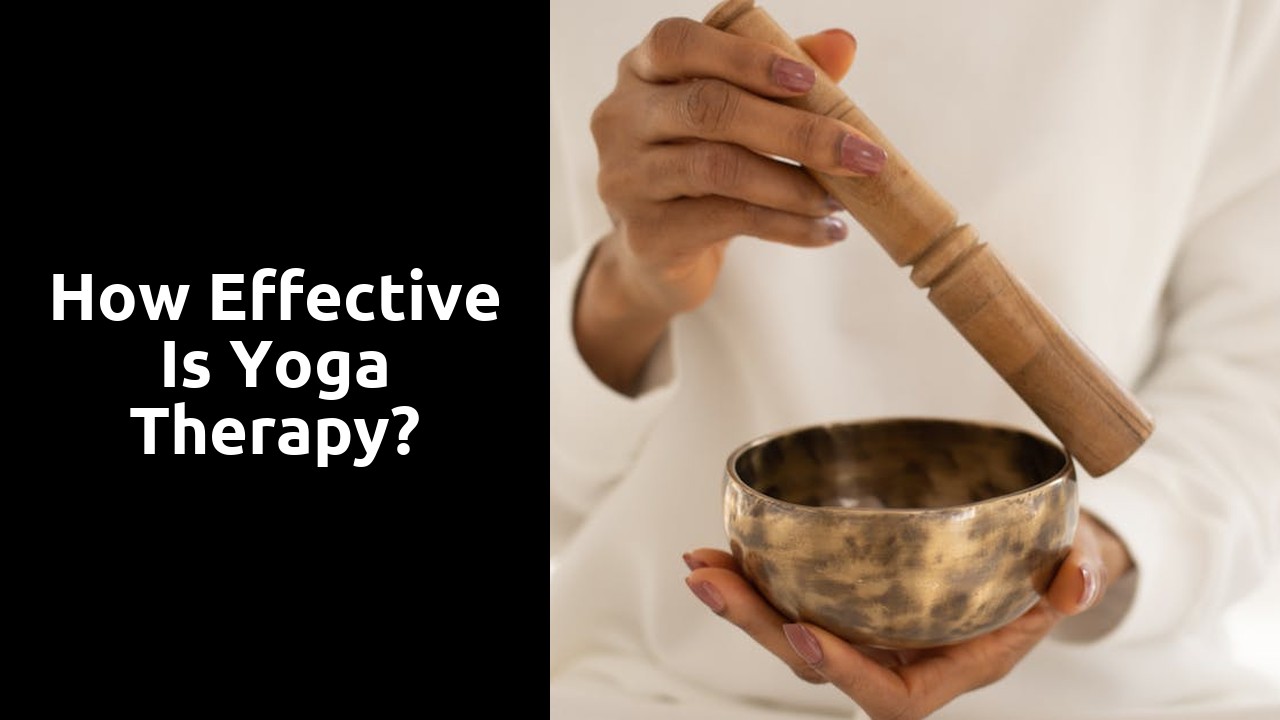How effective is yoga therapy?

Table Of Contents
Yoga Techniques Used
Yoga Therapy utilizes a variety of techniques aimed at improving both physical and mental well-being. Key practices commonly incorporated into yoga therapy sessions include asanas, which are specific physical postures designed to enhance strength, flexibility, and overall body awareness. These postures are tailored to address individual needs and health conditions, making yoga therapy a highly personalized approach to wellness. Additionally, breathing exercises, or pranayama, are integral to yoga therapy sessions as they help promote relaxation, reduce stress, and improve focus and concentration. The combination of these techniques creates a holistic method of healing that targets both the body and mind in unison, offering a comprehensive approach to health and wellness through the practice of Yoga Therapy.
Breathing exercises for relaxation
Breathing exercises play a crucial role in yoga therapy by helping individuals achieve a state of relaxation and mindfulness. By focusing on deep, intentional breathing patterns, participants can calm their mind and reduce stress levels. The controlled breathing techniques practiced in yoga therapy not only promote relaxation but also enhance the mind-body connection, fostering a sense of inner peace and well-being.
Moreover, the breathing exercises in yoga therapy can have a profound impact on one's overall mental health. As individuals learn to regulate their breath and engage in conscious breathing practices, they may experience decreased anxiety and improved emotional resilience. Through consistent practice of these relaxation techniques, participants can cultivate a sense of composure and tranquility, benefitting from the holistic approach of yoga therapy.
Duration of Treatment
Duration of treatment in yoga therapy varies depending on the individual's needs and health goals. Some people may experience positive changes after just a few sessions, while others may require consistent practice over a longer period to see significant results. It is essential to work closely with a qualified yoga therapist to create a personalized treatment plan that suits one's specific requirements and aims to address their unique concerns through the practice of Yoga Therapy.
Consistency is key in reaping the full benefits of yoga therapy. By committing to a regular practice schedule, individuals can gradually build strength, flexibility, and mental clarity. This approach allows them to better manage stress, improve overall well-being, and cultivate a deeper mind-body connection. Ultimately, the duration of treatment in yoga therapy is a journey of self-discovery and self-care, aiming for long-lasting positive effects on both physical and mental health.
Longterm effects on overall health
Long-term effects on overall health following Yoga Therapy are extensively documented. Studies have shown that regular practice of yoga techniques can lead to improved physical fitness, increased flexibility, and enhanced mental well-being. Individuals undergoing yoga therapy often report reduced levels of stress and anxiety, along with improved quality of sleep and overall mood.
Furthermore, the holistic approach of yoga therapy addresses not only the physical aspects of health but also the emotional and spiritual well-being of individuals. This comprehensive approach has been linked to long-term benefits such as lower blood pressure, decreased chronic pain, and enhanced immune function. The incorporation of mindfulness practices and relaxation techniques in yoga therapy can promote a sense of inner peace and balance, contributing to improved overall health and well-being.
Safety Precautions
Safety precautions are of paramount importance when engaging in Yoga Therapy. Ensuring proper alignment during poses is essential to prevent injuries and maximize the therapeutic benefits. Proper alignment not only aids in avoiding strain on the muscles and joints but also allows for the intended benefits of the poses to be fully realized. As Yoga Therapy often involves holding poses for extended periods, maintaining the correct alignment becomes even more crucial in preventing discomfort or injury.
Additionally, it is crucial to listen to your body and respect its limitations during a Yoga Therapy session. Pushing beyond your physical boundaries may lead to strain or injury. Understanding and respecting your body's capabilities can help you progress safely and effectively in your practice of Yoga Therapy. Remember that the goal is not just to achieve certain poses but to enhance overall health and well-being through a balanced and mindful approach to the practice.
Importance of proper alignment
Proper alignment plays a crucial role in the effectiveness of Yoga Therapy. Aligning the body correctly helps in maximizing the benefits of each yoga pose and reduces the risk of injuries. When the body is in proper alignment, the energy flow throughout the body is optimized, promoting physical, mental, and emotional well-being.
Misalignment during yoga practice can lead to strain on muscles and joints, hindering the therapeutic effects of Yoga Therapy. It is important for individuals undergoing yoga therapy to pay close attention to their body alignment under the guidance of a qualified instructor. By ensuring proper alignment, participants can experience the full potential of the healing benefits provided by Yoga Therapy.
FAQS
Is yoga therapy effective for improving overall health?
Yes, yoga therapy has been shown to have long-term positive effects on overall health, including reducing stress, improving flexibility, and promoting relaxation.
What are some common yoga techniques used in yoga therapy?
Some common yoga techniques used in yoga therapy include asanas (physical postures), pranayama (breathing exercises), and meditation.
How long does a typical yoga therapy treatment last?
The duration of yoga therapy treatment can vary depending on individual needs and goals, but sessions typically last between 60 to 90 minutes.
Are there any safety precautions to consider when practicing yoga therapy?
It is important to practice yoga therapy under the guidance of a qualified instructor to ensure proper alignment and prevent injuries. It is also important to listen to your body and avoid pushing yourself beyond your limits.
What are the long-term effects of yoga therapy on overall health?
Practicing yoga therapy on a regular basis can have long-term effects on overall health, such as reducing chronic pain, improving sleep quality, and enhancing mental clarity.